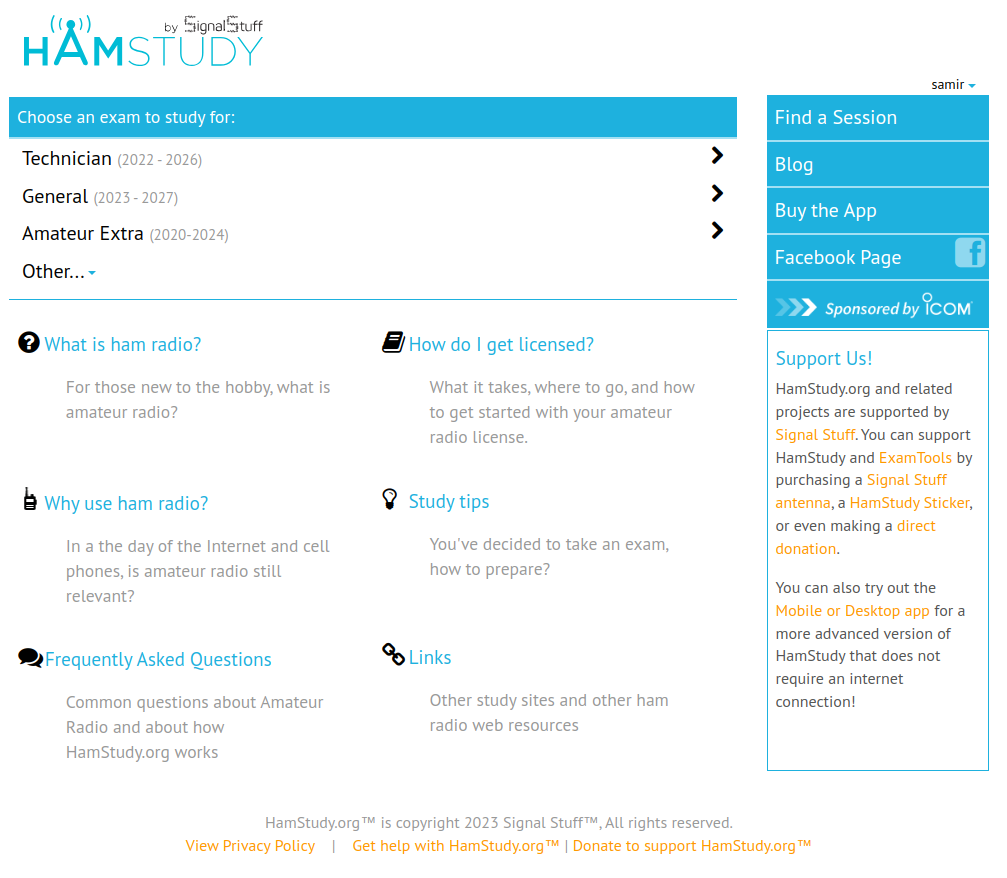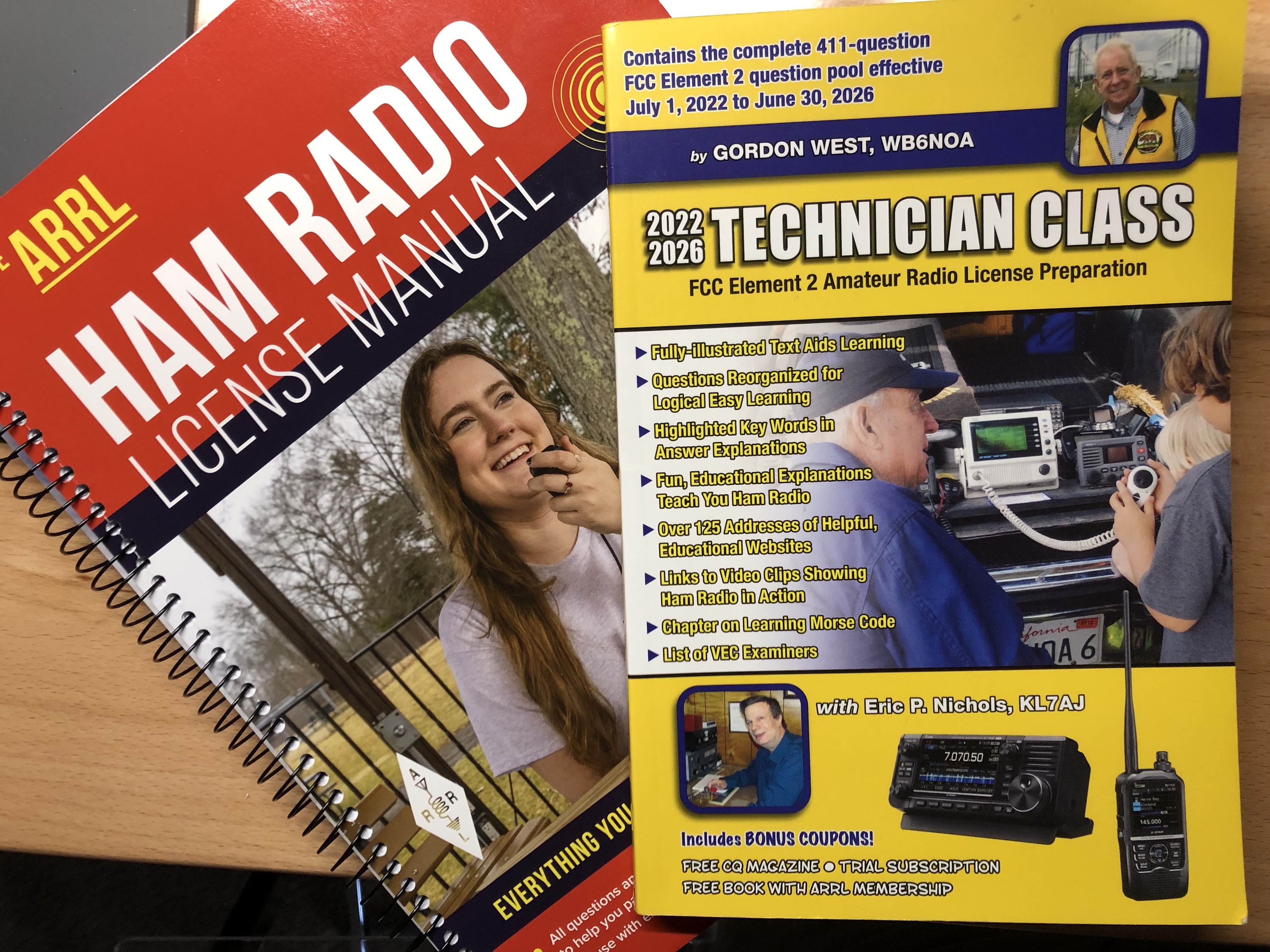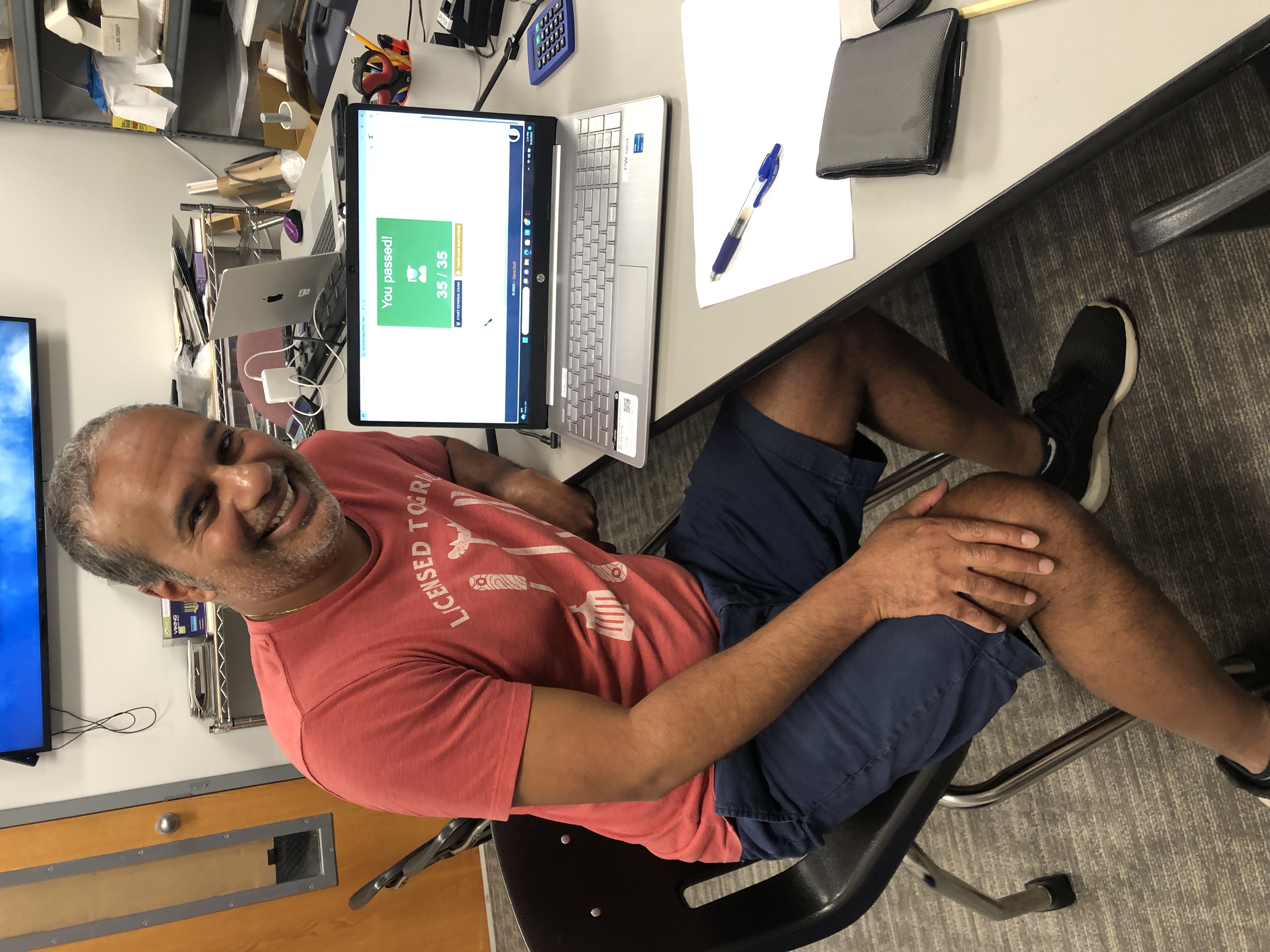
Originally published on 19 September 2023
Contents
I’ve lately become more interested in learning about ham, or amateur, radio and in getting an amateur radio license. I don’t know if this is a subconscious reaction of mine to prepare for what seems like an ever-increasing number of natural disasters and uncertain weather events, a case of FOMO of hearing the team at Jupiter Broadcasting talking about it on Linux Unplugged or just another way to keep the technical part of my brain engaged, but regardless, I wanted to document my approach to getting my Technician class license.
Before I get any further on this, I should point out one important caveat: The steps and process to obtain a Technician license as described here are specific to amateur radio operators in the United States. If you reside in another country, please follow your local geography’s rules and regulations.
Before you get too far down your ham radio journey, I would recommend spending some time browsing and becoming familiar with the site of the American Radio Relay League, or ARRL. Over there, you’ll find lots of good information on what is ham radio and how to get licensed. You can also choose to become a member which offers certain benefits.
In the United States, the Federal Communications Commission (FCC) is the government agency responsible for managing the allocation of the various radio spectrum frequencies and the services that can use them. Amateur operators can obtain a license in one of three classes: Technician, General and Amateur Extra. Starting with the Technician class, which is the entry-level license, each subsequent class offers greater privileges to license holders (the ability to use additional operating modes on more frequencies). You need to pass a licensing exam for each class in order to avail yourself of those additional privileges.
The current question pool for the Technician class exam consists of 411 multiple choice question that are valid through 30 June 2026. (Amateur radio question pools are normally valid for four years so they can be refreshed with new content as required.) In order to obtain your Technician class (Element 2) license, you must take a written exam (either in person or online) consisting of 35 questions, of which you must answer at least 26 correctly.
All 411 multiple choice questions (along with the answers) making up the Technician pool are freely available online on the ARRL web site as a Microsoft Word document. The questions are broken down into subelements that cover things like operating procedures, electrical theory, antennas and safety.
Therefore, one approach to preparing for the exam is to read through all of the questions and memorize the answers. (Keep in mind that when taking the actual exam, the order of the answers may be presented differently than what is shown in the published question pool.) There is certainly nothing wrong with this approach but it’s not one that I would recommend unless you are pressed for time to get your license, primarily because I don’t feel that this is a good way to really learn the fundamentals of ham radio or to retain the information you memorize.
Another approach is to study the questions in the order they are presented in the pool but with some additional background and theory behind them. If you are into flashcards, the web site HamStudy.org is an excellent resource for this. They provide electronic flashcards for every question, along with a brief and community-provided explanation for the answer you can access by clicking the top-right corner of each card. This at least exposes you to some of the key concepts and theories which you could research further should you need additional context or details.

If you learn better by watching video tutorials, I would recommend watching the YouTube playlist “Ham Radio Technician License Prep 2022-2026” on the Ham Radio Crash Course channel by Josh Nass (KI6NAZ). Through about a dozen videos, Josh walks through every question in the Technician pool explaining the answers using the HamStudy.org flashcards as supporting material.
One drawback I found with going through the questions in sequential order was that occasionally, questions on a similar topic were scattered throughout the various subelements. Therefore, I sometimes felt like I was jumping around when trying to learn things. I eventually found two books through various recommendations that I eventually bought to help me study:
“2022-2026 Technician Class” by Gordon West.
The fifth edition of the “ARRL Ham Radio License Manual”.

Both of these books are organized into logical chapters but do a better job of grouping similar concepts together. The book by Gordon West groups questions of a similar topic and presents them with a brief explanation of the answer. At the end of each chapter, he provides links to additional resources, organizations and other sites for more information.
For the way that my brain works, I ultimately chose the Ham Radio License Manual from the ARRL as my main resource of study. It’s presented more like a textbook covering the various amateur radio concepts. Throughout the text, there are cross-references back to the exam questions as the topics they test are covered in the book. I felt that this was a better way for me to learn the fundamentals without feeling like I was “gaming the system”. The last chapter in the book lists all of the questions in the exam pool and themselves are cross-referenced back to the page in which the material was covered. Once you pass the test, the Ham Radio License Manual can also serve as a good reference book.
No matter which method you choose, it’s critical that you take several practice exams before you sign up for taking one for real. I alternated between two different sites to help me with this:
Both sites are free to use and allow you to test your knowledge and track your proficiency by subelement, which is how the questions in the test pool are organized. In addition, both sites provide ways to practice taking the actual 35-question exam. But because some questions on similar topics are scattered across subelements, you may end up trying to answer questions you aren’t yet familiar with. Therefore, the ARRL Exam Review site also allows you to test your proficiency by chapter, as they are presented in the Ham Radio License Manual. This was helpful because as I finished reading through a chapter, I could immediately test my proficiency.
Once I finished reading the Ham Radio License Manual however, I found that I gravitated toward just using HamStudy.org to check my understanding and taking the practice exams. I felt that the site did a better job of tracking my progress and proficiency as well as letting me focus on questions I was consistently getting wrong. HamStudy.org also has a cleaner way of graphically tracking what they call “aptitude” so I could better target the areas I was weak in. Most importantly, however, HamStudy.org offers offline-capable apps for $3.99 in both the Google Play and Apply App Stores. This proved to be immensely beneficial as I could test myself on my phone whenever I had a few minutes to spare. Your progress is always synced between the app and the website and both provide the brief explanations on the back of the flashcards as described above.
Ultimately, my recommendation for people interested in getting their Technician license would be to purchase the ARRL Ham Radio License Manual to learn the concepts and register an account with HamStudy.org to track your proficiency and progress.
The ARRL web site has good information on what you need to bring to an exam session, including the exam fee. Before you can even register for and take an amateur radio license exam, you need to first obtain an FCC Registration Number (FRN) from the FCC Commission Registration System (CORES). Once you do, I recommend using HamStudy.org’s exam session finder to find an upcoming session near you that best suits your schedule. While there are many options for both in-person and remote sessions, I would recommend taking an in-person exam if possible, especially one that is offered by a local amateur radio club. This will allow you to meet some fellow hams in your area and get to know a bit more about what their club offers. I was able to take my exam at New England Sci-Tech which, in addition to running clubs for model rocketry, “Battlin’ Bots”, weather balloons and astronomy, sponsors the Sci-Tech Amateur Radio Society. After taking my exam, I was given a tour of their radio room and given information on how to become a member! Regardless of whether you pass or not, be sure to thank the volunteer exam coordinators who took the time to help proctor your exam session. They will certainly appreciate it!

My immediate next steps are to get an actual radio. I just placed an order for the QRZ-1 handheld transceiver, or HT or “handie-talkie” using the QRZ Jumpstart Program discount. It’s not a fancy unit or anything but I figured it is good enough to allow me to connect on a few local repeaters and to get acclimated with the hobby while I still continue to learn. It will also help me determine which features and capabilities I really need if I decide to upgrade.
I’ve also been attending some weekly and monthly meetings of the various local amateur radio clubs in the area to see what they have to offer. All of them have been very welcoming and supportive to new hams and serve as a great resource in case you have questions.
Many of the area amateur radio clubs also host daily or weekly nets on local repeaters that you can join. Be sure to consult their web sites for information on when they meet, which frequencies to use, and other details. Speaking of repeaters, you can check out RepeaterBook which is a directory of amateur (and GMRS) repeaters throughout the world!
Believe it or not, but amateur radio can also be a very competitive hobby! There are contests to see who can work the most number of contacts in a given time period. If you’re more of a “it’s a marathon, not a sprint” type of person, you’re in luck as you can also participate in the DX Marathon. For those that are more into capture-the-flag or hide-and-seek type challenges, fox hunting, or radio orienteering competitions, are also a big draw. Many of these are family friendly as well since you don’t need a license to receive signals emanating from the hidden “foxes” you need to track down.
Amateur radio also offers a number of other modes of operation beyond just “phone” transmissions. You can learn to operate CW (continuous wave) or Morse code. While no longer a requirement to get your license, CW is still going strong in ham radio, especially if you are a Technician who wants to operate on many of the high frequency (HF) bands on 10, 15, 40 or 80 meters. There are many resources on the web to learn Morse code if you’re interested.
If digital is more your jam, ham radio offers a variety of different digital modes to operate on, from the Internet Radio Linking Project (IRLP), to EchoLink, D-STAR and DMR. Unfortunately, most of these are not compatible with each other but they do offer new and alternative ways to operate in the Amateur radio service.
If that is not exotic enough, you can also use your ham radio to communicate using satellites in outer space or with the International Space Station itself!
Back down on Earth, you can use your Technician license to get involved in community service. Here in New England, they are looking for volunteers to help coordinate logistics and communication for the upcoming Head of The Charles regatta in Cambridge, Massachusetts and the Boston Athletic Association Half Marathon. If you don’t live in New England but are still in the United States, you can always check out the Amateur Radio Emergency Service, or ARES, which is run by the ARRL, or the Radio Amateur Civil Emergency Service, also known as RACES, which is a government run protocol.
Finally, if you feel you have exhausted all of the options available to you as a Technician, you can always start studying to take your General or even Amateur Extra exam!
Either way, I hope to hear you on the air!